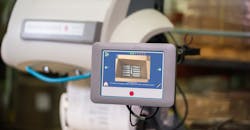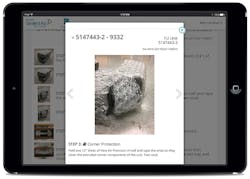The Internet of Things has come an awfully long way in the manufacturing industry. Five years ago, the IoT—or the IIoT in this space—was just a loose collection of digital concepts that planned to one day to illuminate every nook, cranny, and unquantified process on the manufacturing floor. Today, it is already dangerously close to fulfilling that mission.
To back that up, you can pick whatever industry survey you'd like. One conducted in 2017 by Bsquare found that 77% of manufacturers currently have an IIoT solution in place, and that 98% of those IIoTers rate their solutions somewhere between very and somewhat important to their operations.
Or, you can just take a quick look around your plant. Chances are most of your processes are already wired into the system. Chances are your managers—whether in their offices or on their phones—are already tracking productivity peaks and valleys through every shift, line, and cycle.
From design to sourcing to production to global logistics, almost the entire flow of a manufacturing process can now be tracked and traced, analyzed and optimized, recorded and replayed. Almost.
There remains still one last consistent dark spot in most companies' operations, one that harkens back to those distant pre-smart days of half a decade ago, when neither waste nor savings, neither efficiencies nor failures, were yet recorded or optimized: packaging.
"Generally speaking, packaging is not a manufacturer's core business," explains Tonya Jennings, director of digital customer solution strategy for Sealed Air Corp. "They just want to close their eyes and let it happen."
Sealed Air, of course, understands the issues of packaging better than most companies. The Bubble Wrap inventor has been dominating the void-fill market for 58 years now, issuing a steady stream of innovations that have become packaging staples for everyone from big-time manufacturers to one-off eBay dabblers.
The issue with packaging, Jennings notes, usually comes down to one of two user errors.
"The problems with inconsistent packaging are using too much protective material, which can make the shipment more costly, or not using enough, which can lead to damage," she says.
Either way, this lack of consistency translates to more waste and higher costs—two things all of this smart manufacturing business is supposed to have eradicated.
But the packaging department, Jennings says, has yet to be properly illuminated by the all-knowing light of the IIoT.
Now, Jennings and Sealed Air are out to change that.
"Most companies have already connected their CNC machines and their manufacturing systems in order to make their products," she says. "It's a logical extension to bring the packaging process into that."
Packaging a Solution
Sealed Air's solution for this smart gap comes in the form of a web-based knowledge sharing system called PackOS—a new addition to the IIoT arsenal designed to basically cram those 58 years of packaging expertise into your nearest smart device.
""The real vision behind PackOS is to bring together functionality that allows our customers to optimize and control their packaging processes," Jennings explains. "The solution combines data analytics and Sealed Air's decades of packaging knowledge for better, faster decision making."
More simply, it's a system designed to tell packers exactly how to pack their widgets correctly and, in the process, to illuminate those invisible losses caused by under or over-filling packages.
The keys to all this, Jennings explains, are what the company has termed "recipes"—step-by-step instructions that walk packers through the entire packing process for every product that comes their way.
Either created in-house or with the aid of Sealed Air's experts, these recipes are loaded into the PackOS portal with pictures, videos, measurements, and every other conceivable item needed to help even a first-day novice packer achieve optimal consistency.
And that scenario, Jennings says, is a big part of this innovation.
"Packaging consistency is a really large issue for our customers," she explains. "They see a high turnover rate with their packers and they are constantly having to train and retrain people to make sure they are getting consistent packaging out the door."
With this system, she says, a quick scan of a barcode on a particular SKU can easily pull up a video that will walk a newbie through the entire pack, step-by-step, until they fully understand what the product needs, how much it needs of it, and how to go about doing it.
"We found the video to be really helpful for communicating the kind of technicalities that come with some of the more challenging packages," Jennings says. "Visuals teach packers exactly how to wrap something or how to coil the paper, things of that nature that aren't as straightforward as just putting an item in a box and filling the box with void material."
For companies a little further down the IIoT path, she adds, these recipes can feed directly into packaging machines, ensuring that the automation equipment—just like the manual packers—knows exactly what it needs for every SKU.
Smart Test
While its recent explosion of high-tech packaging solutions has thoroughly demonstrated that Sealed Air is far more than just a Bubble Wrap maker—though we all do love our Bubble Wrap—this move into the cutting edge IIoT space still seems like a bold jump.
But Jennings argues that it's really just a natural part of a greater evolution for the company.
"Sealed Air has always been a technology company," she says. "Now we're offering our decades of data science to solve today's complex fulfillment challenges."
And that is a solid, commendable plan, really. The question now is if it actually works.
I first interviewed Jennings about PackOS back in early 2017 when the system was still in beta testing and showing positive signs of success. At the time, Jennings said she was hoping adopters would see around 20% improvements in material costs and up to a 40% decrease in damage caused by inconsistent packaging.
Now that PackOS is live and in the field, Jennings reports that those early estimates seem to be panning out.
"We expected to see a decrease in damage and an increase the numbers of packages out the door," she says. "We're pleased to validate that."
About the Author
Travis Hessman
VP of Content, Endeavor Business Media
Travis Hessman is the VP of Content for Endeavor Business Media. Previously, Travis was the Editor-in-Chief for Industry Week and New Equipment Digest as well as the Group Editorial Director for Endeavor's Manufacturing Group.
He began his career as an intern at IndustryWeek in 2001 and later served as IW's technology and innovation editor. Today, he combines his experience as an educator, a writer, and a journalist to help address some of the most significant challenges in the manufacturing industry, with a particular focus on leadership, training, and the technologies of smart manufacturing.



